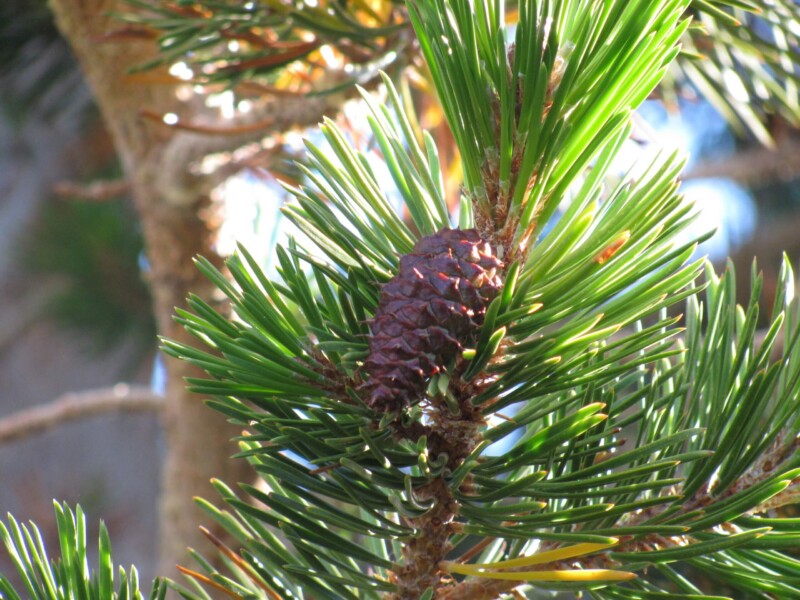Elena Shao, The New York Times, March 6, 2023
In these “zombie forests,” older, well-established trees — including ponderosa pines, Douglas firs and sugar pines — still tower overhead, but few young trees have been able to take root because the climate has become too warm and dry for them to thrive.
In California’s ‘zombie’ forests, conifers have become mismatched to a warming climate.
Zombie forests are “cheating death, in a way,” said Avery Hill, an ecologist and the study’s lead author.
Mature trees are able to survive even after their local climate has shifted, but the species is not likely to grow back in these areas after a major disturbance, like a catastrophic wildfire, logging event or period of extreme drought. Instead, the study found, the forest is more likely to be replaced by smaller, shrublike vegetation that is adapted to warmer, drier conditions.
For their analysis, Dr. Hill and colleagues examined historical data going back more than eight decades, comparing detailed survey data plotted by the U.S. Forest Service in the 1930s with more recent vegetation maps. They found that during that time period, the Sierra Nevada’s conifer forests had, on average, shifted about 112 feet higher in elevation. The most suitable temperature range for the conifers had shifted even faster, climbing upslope by about 600 feet.
That has left an estimated 11 percent of today’s conifer forest in the Sierra Nevada mismatched to its current climate conditions, with another 8 percent considered “severely” mismatched, according to the study, which was published in the journal PNAS Nexus. Dr. Hill was a doctoral student at Stanford at the time of the research.
Global climate change has put pressure on many species of plants and animals to move to higher elevations or toward polar latitudes in order to stay in climate zones they have historically adapted to. Longer-lived species, like conifer trees, which can live for centuries, often find it harder to keep up with the velocity of climate change, said Chris Field, the director of the Stanford Woods Institute for the Environment and senior author on the study. They can only move as fast as their seeds get dispersed.
Warmer winters and drier summers can also embolden invasive insects and diseases to move northward, killing some native plants and trees. Foresters in Rhode Island and across the country have tried ambitious experiments to deliberately move certain tree species northward in a process known as assisted migration.
Temperatures in the Sierra Nevada have warmed by an average of 1.2 degrees Celsius (2.2 degrees Fahrenheit) since the 1930s. A warming climate has exacerbated California’s “weather whiplash,” experts say. Following years of drought, this year saw major storms that dumped record amounts of snow across the Sierras.
The recent study ascribed climatic factors, including changes in annual precipitation and winter temperatures, as two major drivers of the shifts in suitable conifer habitats. It also notes that wildfires and other disturbances, as well as increasing human presence in formerly wild lands, have played a role in the changing forests.
Global warming “is not the entire story,” said Jon Keeley, a research scientist with the United States Geological Survey, who did not work on the study. The role of historical forest management practices has also influenced the changes in conifer forest distribution, he said, as it has helped fuel more destructive wildfires.
Until the 1930s, low-intensity fires that did not kill many large trees occurred regularly, which meant tree seedlings could more easily re-establish themselves in those regions after the fire. However, decades of aggressive wildfire suppression that began in the 20th century led to a buildup of vegetation in forests that was primed to burn. Once ignited, they often resulted in higher-intensity “crown” fires that could spread across a forest canopy from treetop to treetop and leave vast swaths of the landscape barren and arid, making it more difficult for young trees to take root, Dr. Keeley said.
Americans have also increasingly moved into the fire-prone foothills of the Sierra Nevada. Rapid development in areas known as the “wildland-urban interface” has increased wildfire risk.
More recently, forest managers have begun using prescribed burns to preemptively thin out forests so that wildfires have less fuel to consume, but the changing climate is making intentional burns more complicated to carry out.
The Stanford team also mapped where the conifer-dominated forests of the Sierra Nevada have already transitioned to landscapes dominated by other vegetation, like shrubs or flowering plants, between the 1930s and the 2010s.
When transitions like this happen, it can harm local and native species that are dependent on the forests. Forests also play a critical role in regulating water quality and sequestering carbon.
The new study can help forest managers and policymakers prioritize their limited resources, said Winslow Hansen, an ecologist with the nonprofit Cary Institute of Ecosystem Studies, who did not contribute to the study.
That could mean conserving zombie forests in mismatched regions for as long as possible, he said, or directing resources to areas where the climate is still aligned with the vegetation.


